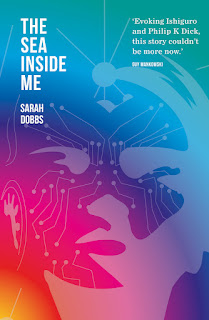Shut up! You’re getting too philosophical and esoteric. No wait… tell me more. Experimental horror collection sprouts a spectrum of reactions.In “It Won’t Go Away”, one of the more impressive entries in Paul Tremblay’s sometimes brilliant and sometimes baffling Growing Things and Other Stories, the protagonist discovers strange dark areas on photos of a horror writer friend who recently committed suicide. This protagonist, also a writer, begins to extract and rearrange these black spots.
Similarly, Tremblay’s inaugural short story collection gives readers odd, difficult-to-interpret dark spots. It challenges the reader to pull out excerpts, to twist them, to place them next to others. Sometimes, the beginnings of a picture emerge. Other times, the reader is left with a bunch of dark areas.
In his story notes at the back of the volume, Tremblay doesn’t offer much in terms of interpretation but rather reveals what inspired the stories. This reminds one of the irritating creative writing student who says, “It means whatever you think it means.”
These stories refuse to give clear-cut answers – the author even refers to himself as Mr Ambiguity in one story. This strategy leads to entries that vacillate from refreshing and thought-provoking to rambling and annoying. Often, Tremblay leads readers to think the story is going one way but then pulls the carpet from under them.
Without its forerunner The Cabin at the End of the World, this collection would barely make it through the front door of William Morrow. Some stories, reading like commercials for men’s cologne, leave the reader completely in the dark. Others are pontificating and cumbersome. “Notes from the Dog Walkers”, for instance, is written as a series of notes left by dog walkers at a man’s house. What starts as cute reports devolves into hulking paragraphs of self-indulgent, meandering rants that stitch together random thoughts.
The concluding story, “The Thirteenth Temple”, which resurrects sisters Merry and Marjorie from Tremblay’s innovative 2016 possession novel A Head Full of Ghosts, gets lost in a miasma of repetition and vagueness.
Despite striking out in some cases, the collection does offer some winners – several stories were so intriguing that I read them twice. One of the best entries, the Hell Boy-inspired “Her Red Right Hand,” is a beautiful exploration of the grieving process. When Gemma’s mother dies, her father turns into a sulking, drunken mess. He often retreats to his bedroom, and he says things out of anger. The girl spends time near a well, where she confronts a goblin who degrades her and, interestingly, has her father’s voice. The girl’s drawings start to create a new reality at the well. This story exemplifies the power of art in overcoming inner demons, expressed in this case as an outer goblin.
Another engrossing offering is “The Teacher,” in which a beloved high school history teacher exposes his students to “special lessons”, one of which is a paused video of a preschool boy sailing through the air toward a wall after being thrown by his teacher. As the weeks progress, the teacher slightly advances the frame, causing the suspended boy to get closer to the wall. The image captures what Tremblay is doing with most of these stories – showing people on the brink of disaster and encouraging several possible interpretations.
“The Getaway”, ostensibly about four men gradually disappearing while fleeing a crime scene, turns out to be a commentary on the repercussions of neglectful parenting.
In “Nineteen Snapshots of Dennisport”, a man reflects on photographs from a boyhood family vacation in Dennisport, Massachusetts. Most of the photos are innocuous, but the narrator gradually reveals more about his mysterious father until the story ends with a surprising revelation.
“Our Town’s Monster”, one of the entries I read twice, intrigues despite its lack of clarity. A realtor showing a home to a dull, yet attractive couple nonchalantly reveals that a monster lives in a nearby swamp. A centenarian who is supposed to be (but isn’t really) the last teacher at a one-room schoolhouse is perceived as a kind of monster. A boy attempts to frighten his ultra-philosophical younger brother at a graveyard. The brother, immersed in his extremely violent video games, isn’t having it. Tremblay seems to be commenting on the human tendency to be so wrapped up in our own issues that we don’t see the monsters right in front of us.
When I was in elementary school, I did an experiment in which I placed the same kinds of seeds in separate pots and fed each one a different liquid (e.g. water, milk, coffee, tea). While some plants rose quicker than I expected, others never even broke through the soil. In Growing Things and Other Stories, Paul Tremblay feeds each horror story with a different elixir to inspire several questions: What is a monster? When, if ever, will it surface? Or has it already surfaced? Unfortunately, all that experimentation suffers from a fair amount of muddiness.—Douglas J. Ogurek ****







